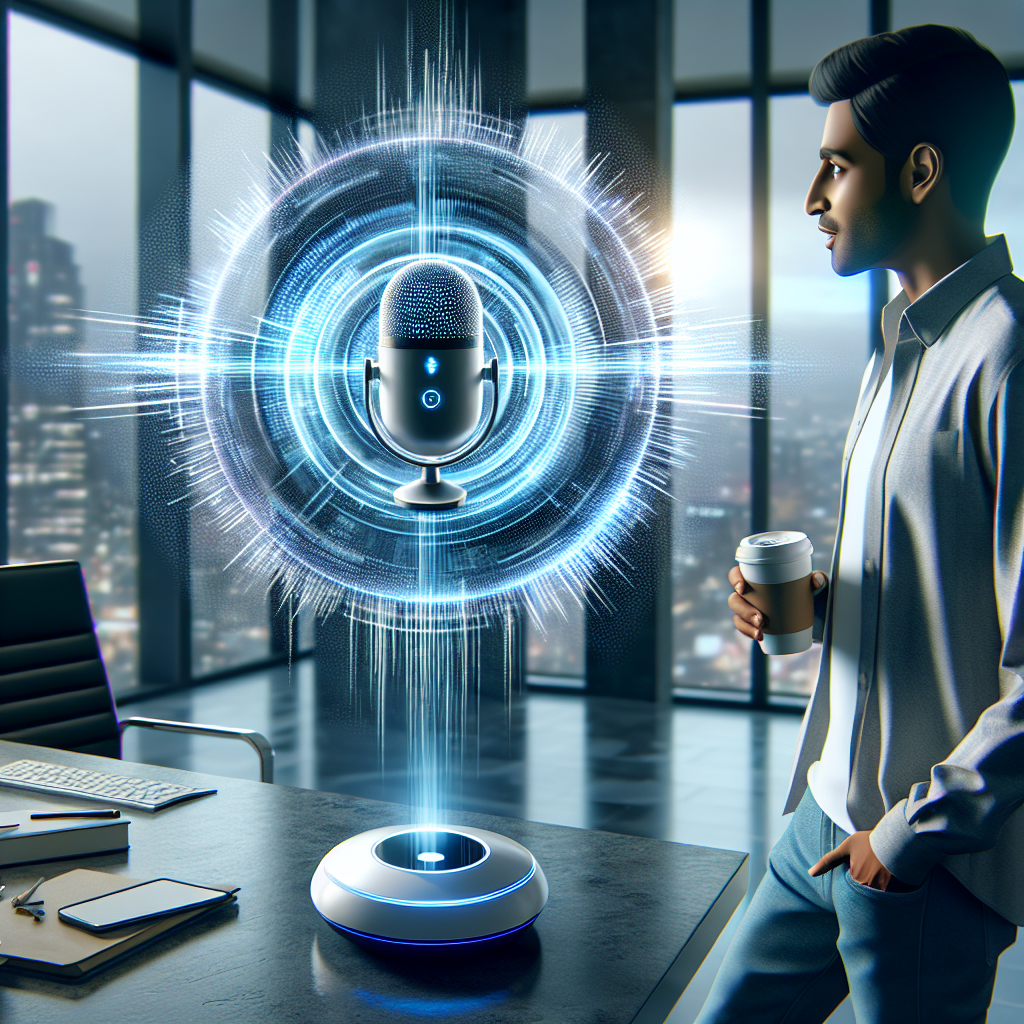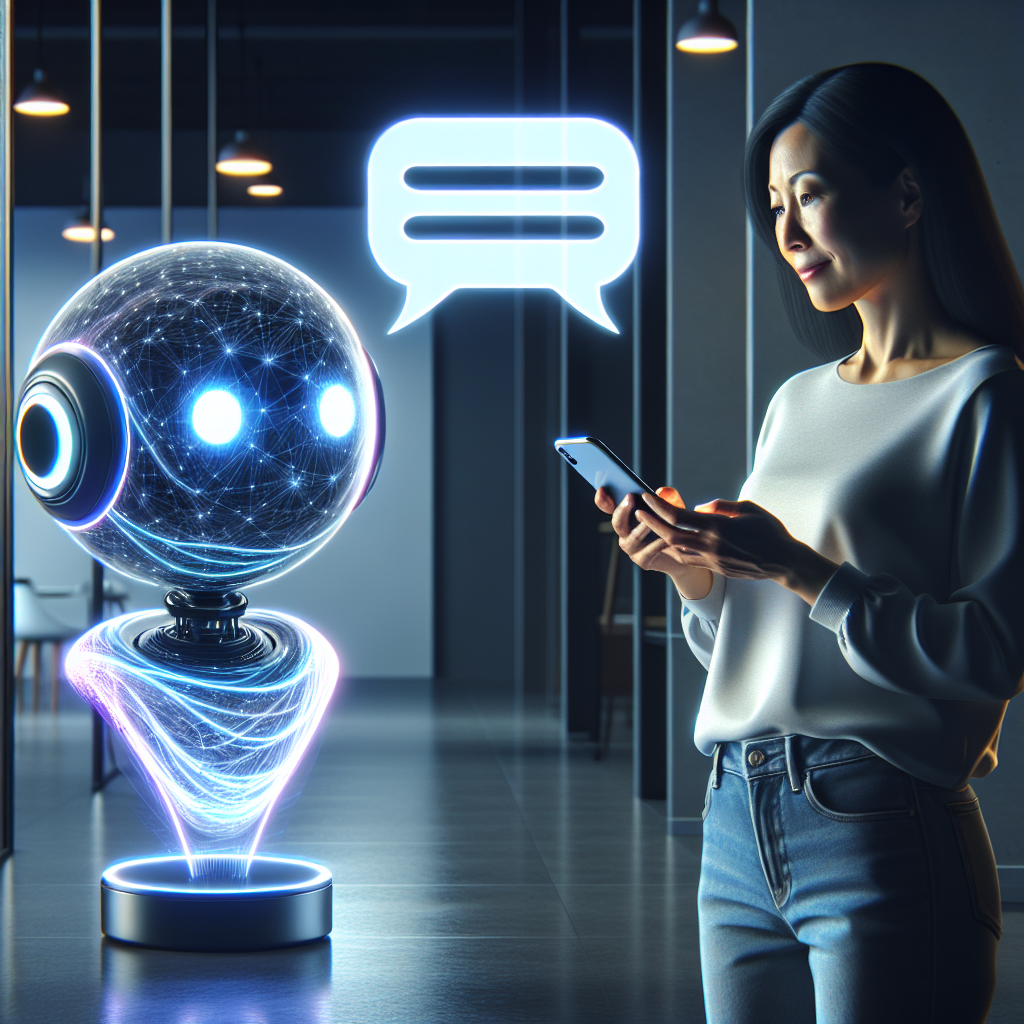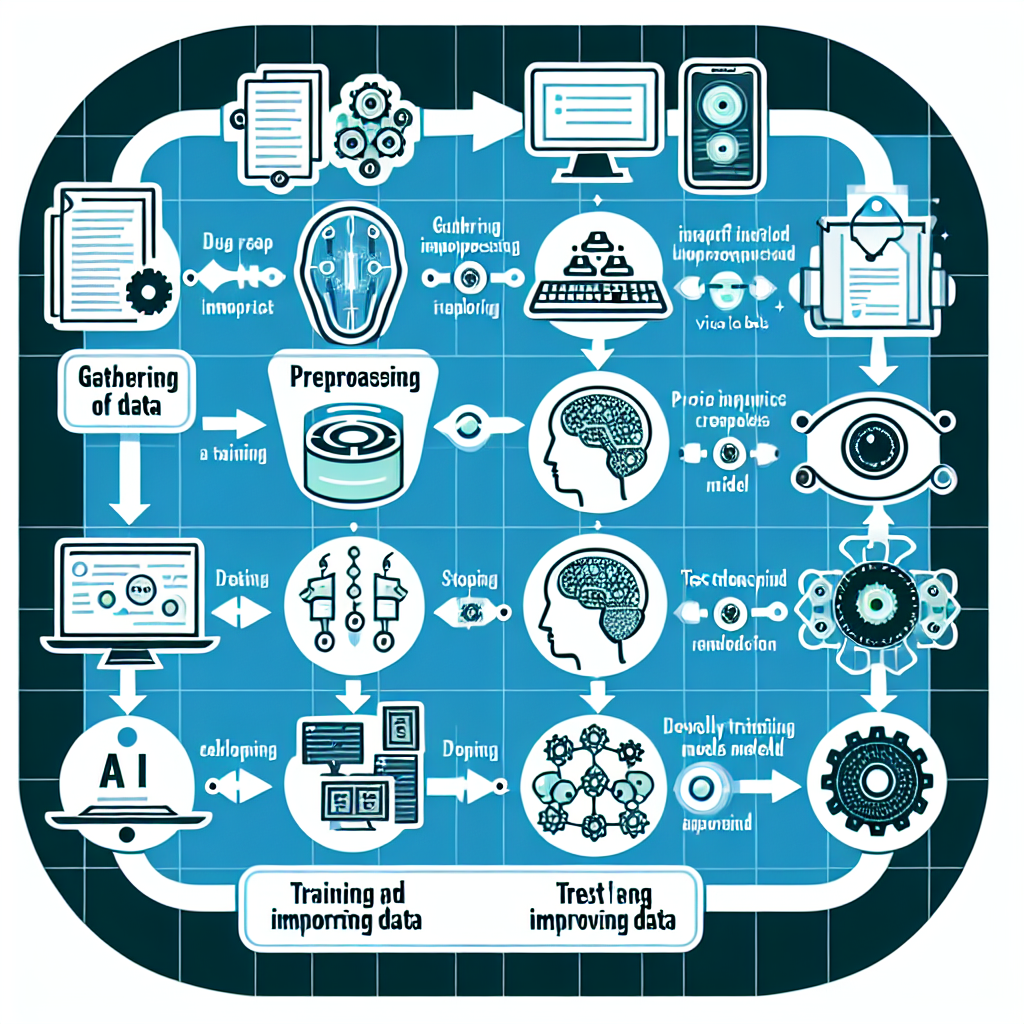
In the rapidly transforming landscape of customer service, AI-powered voice bots have marked their prominent presence. These voice bots are digitally intelligent interfaces, leveraging the power of artificial intelligence (AI) to interact with customers and address their queries.

Typically, these voice bots are programmed to handle routine customer inquiries, resulting in lower wait times and improved customer satisfaction. Whether it's billing inquiries, transactional details, appointment scheduling, or FAQs, AI-powered voice bots are capable of managing a wide array of customer service tasks efficiently, allowing human executives to focus on complex issues.
One of the futuristic applications in this domain is My AI Front Desk, a sophisticated AI voice bot that not only converses naturally with customers but also understands their intent. It can recognize and remember customer preferences, making interactions personalized and effortless. To find out more about this AI-driven approach, consider researching My AI Front Desk.
In the grand scheme of customer service operations, the role of voice bots is crucial. Their AI-driven approach empowers businesses to automate their customer service, handling higher volumes of customer inquiries efficiently, and producing high-level results. In the coming years, these AI-powered voice bots are set to revolutionize customer service with their intelligence, proficiency, and scalability, fueling a new era of service provision and customer interaction.
Gone are the days when customers had to wait in long queues to get their minor inquiries resolved. Today, AI-Powered Voice Bots are transforming the space of customer service by swiftly handling routine inquiries. In the dynamic technological marketplace, several features enhance the effectiveness of these AI voice bots. Let's delve into some of them: Zapier integration, real-time decision making, and unlimited parallel call handling.
Integrating with platforms like Zapier allows voice bots to seamlessly connect and interact with thousands of other tech applications. This not only removes any technological constraints but also creates an environment where every application works hand in hand to provide optimal service.
One of the most noticeable advancements in voice bot technology is their ability to make decisions in real-time. They possess the ability to learn and evolve through their continuous interactions with customers. Real-time decision making assists in providing personalized responses based on customer's past data and current query, enhancing the overall experience.
The high-volume customer queries that come simultaneously can be effortlessly handled by these AI-powered voice bots due to their capability of unlimited parallel call handling. Unlike human agents who can take only one call at a time, these bots can handle multiple queries simultaneously, thereby significantly reducing the customer waiting time. To know more about this astonishing technology, refer to this article.
In conclusion, the world of customer service is being revolutionized by AI-Powered Voice Bots. By leveraging features like Zapier integration, real-time decision making, and unlimited parallel call handling, these innovative bots are ensuring higher customer satisfaction and operational efficiency. As their abilities continue to grow, they are set to transform how businesses provide customer service entirely.
In the rapidly evolving digital age, AI-powered voice bots have emerged as formidable tools in managing routine customer inquiries, displaying remarkable adaptability and effectiveness across diverse industries. Let's look at some real-world examples that illustrate their impactful deployment.

The Bank of America's AI assistant, Erica, has been a breakthrough solution, handling millions of customer inquiries and processing banking transactions with ease. Be it checking the latest transactions, scheduling payments, or even receiving personalized financial guidance, Erica manages to answer a significant amount of routine inquiries, freeing up time for human agents to handle more complex issues.
In the hospitality sector, hotel giant Marriott's AI chatbot, Aloft, has been instrumental in improving guest experiences. By handling routine inquiries like room service requests, wake-up call scheduling, or recommending local attractions, Aloft has made guest interaction more streamlined and personalized, proving the adaptability of AI voice bots in different sectors.
Another remarkable example is the deployment of AI voice bots in the healthcare sector. Buoy Health's AI chatbot assists users in identifying their symptoms and guides them towards appropriate care, thereby significantly reducing the burden on healthcare professionals and making healthcare more accessible to all.
These examples underscore the pivotal role that AI voice bots are playing across sectors. They not only automate routine inquiries but also enhance customer engagement and satisfaction levels dramatically. With further advancements in AI technology, we can expect this trend to continue and reshape the industries to be more efficient, productive, and accessible.
The widespread adoption of AI-powered voice bots in business operations is indisputable. With the transformative capability to automate customer service inquiries, these intelligent tools offer an array of benefits ranging from boosting operational efficiency, reducing operational costs to enhancing customer engagement.
Firstly, these innovative solutions enable businesses to handle high volumes of routine inquiries without incurring substantial operational costs. In unsubscribing from the traditional method of deploying human agents, businesses can enhance their operational effectiveness significantly. With customers' inquiries addressed round-the-clock and promptly, AI voice bots remove the constraints of time zones and alleviate the pressure on human customer service representatives.
Additionally, the use of AI voice bots leads to tremendous cost reduction. With these automated systems, companies expend less on hiring and training customer service representatives. Over time, the reduced staffing cost translates into savings that can be redirected to other strategic aspects of the business.
Lastly, AI voice bots play a pivotal role in bolstering customer engagement. Owing to their capability to provide instant and personalized responses, customers enjoy an improved, seamless and enriching interaction. The interaction personalized by AI voice bots can significantly increase customer satisfaction levels, a factor that directly impacts business growth and customer retention.
Therefore, it's clear how AI-powered voice bots deliver various benefits for businesses in today's digital era. By optimizing routine customer inquiries, businesses not only attain operational and financial perks but also establish a pathway to ever-improving customer relationships, setting themselves apart in this fast-paced, competitive market.
Integrating AI-powered voice bots into your customer service framework is a fantastic way to streamline processes, alleviate strain on human agents, and promptly resolve routine customer inquiries. Contrary to a common perception, the implementation and setup of these advanced tools is not a daunting task. With user-friendly configuration options and clear guides (helpful setup guides), even less technically inclined team members can facilitate a smooth integration.

Before the integration process begins, it is essential to identify which routine customer inquiries your voice bot will handle. Will it be primarily for FAQs? Or perhaps appointment setting, billing inquiries, or technical assistance? This narrowly defined purpose will guide the voice bot's configuration and training data selection.
After defining the bot's role, the next step is integrating it into your existing customer service system. The vast majority of AI voice bot solutions available today are designed to be compatible with a range of systems (e.g., CRM platforms). They're also fitted with user-friendly dashboards and drag-and-drop interfaces. This makes their setup a rather plug-and-play process, requiring minimal engineering resources.
The installation process typically involves just a few steps. After signing up for an account with the chosen bot provider, one can access the administrative panel for setup. Here, you can specify the bot's function, customize its voice and tonality, set preset responses, or link databases for query processing. For detailed implementation guides, always refer to the platform-specific guides coverage.
Testing is also a crucial part of implementation. Before making your bot go live, conduct rigorous testing. This phase should encompass randomized testing, expected input testing, and in-the-wild testing. Any problems that may become barriers to a seamless customer experience must be ironed out.
In conclusion, the setup and implementation of AI-powered voice bots are straightforward. It's a step-by-step process that, when strategically executed, can greatly enhance your customer service provision.
The realm of AI-Powered Voice Bots stands on the cusp of a thrilling new era, poised to monumentally impact business, customer service and the general landscape of customer interaction as we know it. With a surge in AI-powered solutions taking center stage, voice technology is becoming increasingly customized, flexible, and human-like, ready to handle routine customer inquiries with precision and efficiency.
Trends like AI voice bots personalization and progressive learning are gaining traction, pushing us into an age of intelligent automation. Businesses are not only using AI-powered voice bots to streamline operations, but are also adapting them to provide personalized experiences that mimic human interaction to a surprising degree. Continued automation is inevitable in this rapidly progressing market, with bots set to delve deeper into customer preferences, analyzing data effectively to offer a more intimate and personalized interaction.
Smarter integrations of voice bots into existing systems and platforms, such as social media and messaging apps, are another promising trend. Cross-platform integration facilitates a seamless user journey, where the customer can be easily transferred to a human agent when required, or have their queries addressed by the voice bot across multiple platforms effortlessly.
The future of AI voice technology seems densely populated with opportunities. As AI voice bots handle customer inquiries, businesses can focus on other strategic areas, leading to reduced costs and improved quality of services. In the backdrop of this rapidly changing scenario, a failure to adapt may place businesses at risk of being left behind. However, those forward-thinking enough to adopt these advancements may set themselves apart, redefining the customer interaction landscape with a perfect blend of technology and human touch.
The AI voice technology revolution is already here, and the ride forward promises to be an exciting one indeed. As businesses adapt and learn to harness the power of AI voice bots to handle routine customer inquiries, they need to stay abreast with these future trends and advancements for better, more effective deployments, ultimately leading to customer satisfaction and improved bottom-line.
Start your free trial for My AI Front Desk today, it takes minutes to setup!








